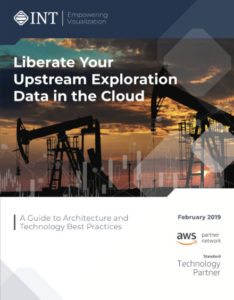INT and Bluware are partnering to empower their upstream clients with true lossless, serverless storage and advanced data visualization in the cloud.
HOUSTON, TX – May 4, 2020 – Interactive Network Technologies, Inc. (INT) a leader in advanced domain visualization in digital exploration and production (E&P) and Bluware Corp., the digital platform that enables the oil and gas industry to accelerate digital transformation initiatives and adopt cloud computing for subsurface data, are pleased to announce the integration of Volume Data Store (VDS), a data format with adaptive streaming technology for seismic data storage, into IVAAP, an upstream data visualization platform.
IVAAP is an HTML5 data visualization and collaborative platform for large Geoscience and petrophysical data sets in the cloud that empowers product owners, developers, and architects to accelerate the delivery of subsurface digital solutions for oil and gas. Deployable in any cloud environment (Azure®, GCP®, AWS®), IVAAP can scale to meet the needs of tens to thousands of users.
“Companies are pushed to the extreme in terms of remote collaboration and access, and, especially in the case of seismic visualization, finding the right tool to handle large datasets in the cloud can be even more challenging,” says Dr. Olivier Lhemann, President and Founder of INT. “Partnering with Bluware means INT can offer our clients true serverless, lossless storage to visualize their upstream data in the cloud.”
Bluware VDS manages all types of seismic data, including pre-stack, post-stack, WAZ, and more as demanded by an organization’s business needs, workflows, and infrastructure requirements. It can also transfer legacy formats such as SEG-Y or SEP using advanced on-the-fly transcoding on-premise or in the cloud.
“Bluware VDS cloud-native seismic data environment will provide customers with quick, cost-effective, remote access to their data, which is becoming imperative for organizations,” says Dan Piette, CEO at Bluware.
Read the press release on PRWeb >
About Bluware Corp.
Bluware enables oil and gas companies to solve the most challenging objectives in the petrotechnical world. E&P companies use Bluware to achieve previously unthinkable workflows using cloud computing, and artificial intelligence for subsurface data applications and workflows. For more information, visit www.bluware.com.

